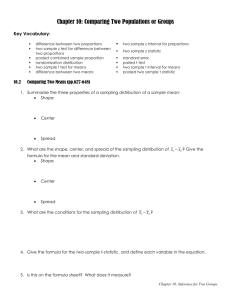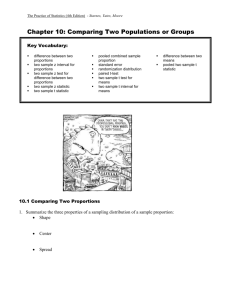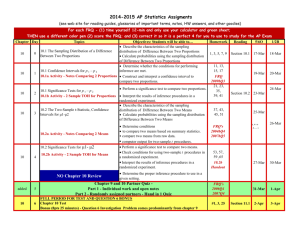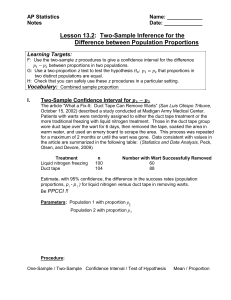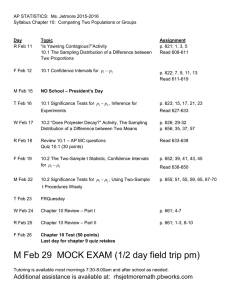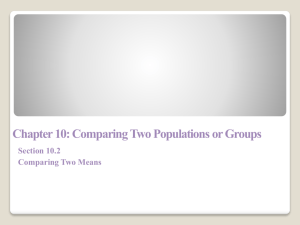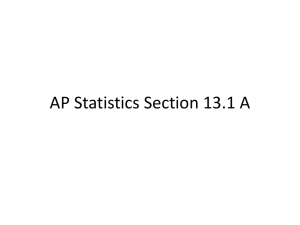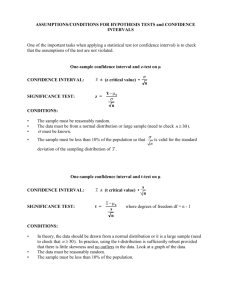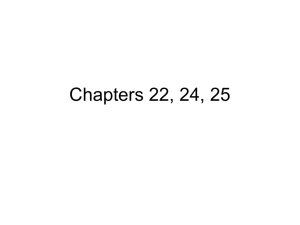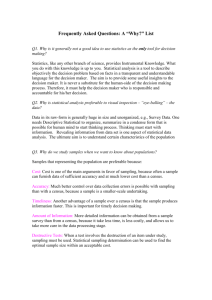Chapter 10 Guided Reading
advertisement
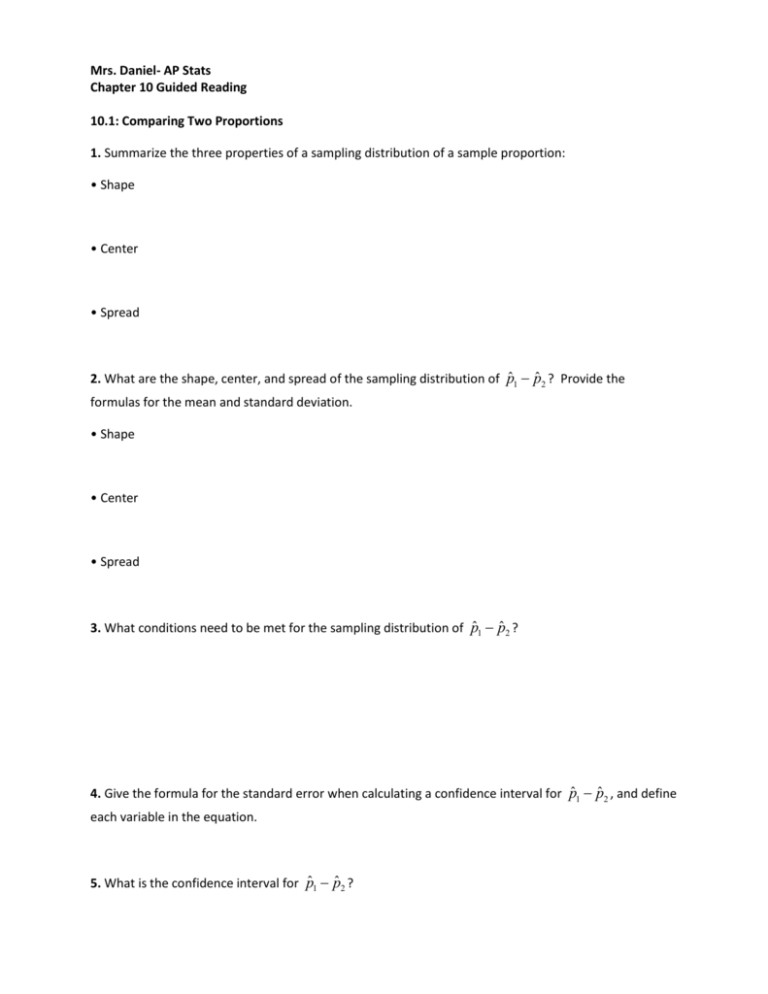
Mrs. Daniel- AP Stats Chapter 10 Guided Reading 10.1: Comparing Two Proportions 1. Summarize the three properties of a sampling distribution of a sample proportion: • Shape • Center • Spread 2. What are the shape, center, and spread of the sampling distribution of pˆ1 pˆ 2 ? Provide the formulas for the mean and standard deviation. • Shape • Center • Spread 3. What conditions need to be met for the sampling distribution of pˆ1 pˆ 2 ? 4. Give the formula for the standard error when calculating a confidence interval for pˆ1 pˆ 2 , and define each variable in the equation. 5. What is the confidence interval for pˆ1 pˆ 2 ? 6. What conditions must be met in order to use the Two-sample z Interval for a Difference between Two Proportions? • Random • Normal • Independent 7. State the null hypothesis for a two proportion significance test. 8. What does pˆ c represent, and how is it calculated? 9. Why do we pool the sample proportions? 10. Give the formula for the two-proportion z-statistic, and define each variable in the equation. 11. What are the conditions for conducting a two-sample z test for a difference between proportions? 12. How are these different than the conditions for a one-sample z interval for p? 10.2: Comparing Two Means 1. Summarize the three properties of a sampling distribution of a sample mean: • Shape •Center •Spread 2. What are the shape, center, and spread of the sampling distribution of x1 x2 ? Give the formula for the mean and standard deviation. • Shape • Center • Spread 3. What are the conditions for the sampling distribution of x1 x2 ? 4. Give the formula for the two-sample t-statistic, and define each variable in the equation. 5. What is the standard error of x1 x2 ? Is this on the formula sheet? 6. Why do we use a t statistic rather than a z statistic? 7. How do you calculate the confidence interval for x1 x2 ? 8. In a two-sample t interval problem, what conditions must be met for comparing two means? 9. What are the conditions for conducting a two-sample t test for 1 2 ? 10. Describe the Normal Condition when using the two sample t procedures. 11. How do you proceed when using two-sample t procedures to check the Normal Condition in the following cases: • Sample size less than 15 • Sample size at least 15 • Large samples 12. In a two-sample problem, must/should the two sample sizes be equal? 13. When doing two-sample t procedures, should we pool the data to estimate a common standard deviation? Is there any benefit? Are there any risks?
